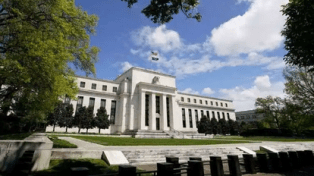The Federal Reserve is likely to delay cutting interest rates until the latter part of the year, predicts the CEO of one of the world’s largest independent financial advisory and asset management organizations.
The prediction from deVere Group’s Nigel Green comes as the core Personal Consumption Expenditures price index in January saw an increase of 0.4% from December.
He says: “The Federal Reserve’s preferred inflation gauge shows prices rose faster last month.
“With the monthly change in the core personal consumption expenditures price index, which excludes the volatile costs of food and energy, much higher in January than in previous months, the US central bank will likely be prompted to push back again on cutting interest rates.
“We expect the easing of monetary policy to be ruled out in March by the Fed.
“Indeed, with the trajectory to get back to the 2% inflation target looking increasingly slow, and with officials exercising caution, we could have to wait to until the latter part of the year for the highly anticipated Fed pivot.”
In an environment where interest rates are expected to remain elevated for an extended period, historically, certain sectors have demonstrated resilience and even thrived in such conditions.
One sector that tends to benefit from higher interest rates is the financial sector. “Banks and financial institutions often experience improved profit margins as they can charge higher interest rates on loans while managing their cost of funds effectively,” says Nigel Green.
Another sector to consider is energy. “The demand for energy is continuing to rise, driving the profitability of energy companies. Additionally, certain commodities, like precious metals, can serve as a hedge against inflation, making the materials sector an attractive option.”
He continues: “Tech companies with strong fundamentals are also likely to weather higher for longer interest rate hikes well. While higher rates can increase borrowing costs, tech firms with solid cash positions and innovative solutions can be expected to still thrive.
“Most importantly, as ever, maintaining a diversified portfolio remains crucial.”
He concludes: “With the Fed likely to maintain their steady position on rates for longer, investors might need to consider rebalancing their portfolios.”




